I have been following a wonderful blog for the past year or so--http://sprinterlife.com/. I was especially moved by a recent post, so I asked permission to lift it in it's entirety and repost here. This is NOT an original post by me!
Pacific Ocean Trash Vortex
JANUARY 27, 2012 BY 48 COMMENTS
9 300StumbleUpon7I’ve been wanting to write this post for a while. Recently a lot of people on Facebook posted photos about this issue, so I figured it was a good time to build on the inertia.
Please reshare this post on Facebook so we can spread the awareness of this problem.
After arriving in Huanchaco 4 months ago I noticed that every day the ocean would wash up enormous amounts of plastic garbage onto the beach. Every day local workers would show up to clean the tourist beach, but the north and south remained littered with debris. It was clear to me that this waste was coming from out at sea, but why? And where was the source?
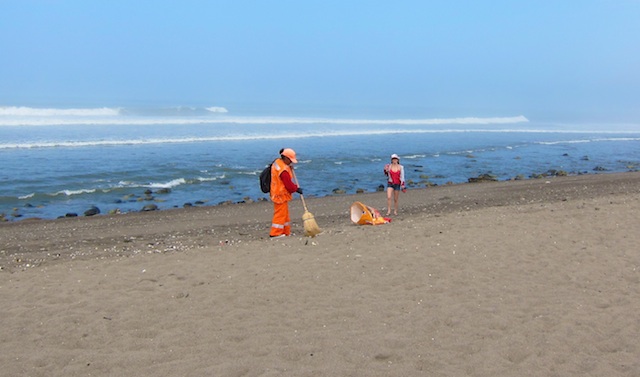
After doing some research I discovered that our Pacific Ocean is in serious trouble. The problem was much worse than I could have possibly imagined. That got me wondering how many other people know about this? So here is what I found when I looked under the covers…
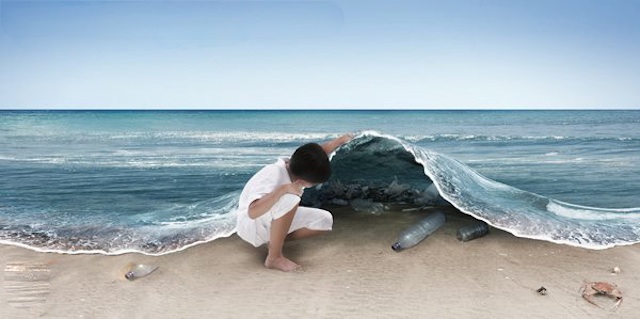
There is a “plastic soup” of waste floating in the Pacific Ocean and it is growing at an alarming rate. Maybe you heard it was the size of Texas? Yes, it was at one point. But now scientists believe it covers an area twice the size of the continental United States, and is still growing.
The vast expanse of debris – in effect the world’s largest rubbish dump – is held in place by swirling underwater currents. This drifting “soup” stretches from about 500 nautical miles off the Californian coast, across the northern Pacific, past Hawaii and almost as far as Japan.
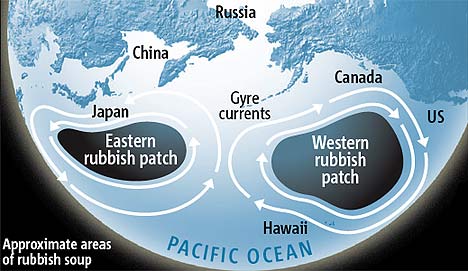
Charles Moore, a former sailor, came across the sea of waste by chance in 1997, while taking a short cut home from a Los Angeles to Hawaii yacht race. He had steered his craft into the “North Pacific gyre” – a vortex where the ocean circulates slowly because of little wind and extreme high pressure systems. Usually sailors avoid it.
He was astonished to find himself surrounded by rubbish, day after day, thousands of miles from land. “Every time I came on deck, there was trash floating by,” he said in an interview. “How could we have fouled such a huge area?”
Mr Moore, the heir to a family fortune from the oil industry, subsequently sold his business interests and became an environmental activist. Back then he warned that unless consumers cut back on their use of disposable plastics, the plastic stew would double in size over the next decade. It’s far exceeded that prediction.
Most debris consists of small plastic particles suspended at or just below the surface, making it impossible to detect by aircraft or satellite. Instead, the size of the patch is determined by sampling.
The “soup” is actually two linked areas, on either side of the islands of Hawaii, known as the Western and Eastern Pacific Garbage Patches.
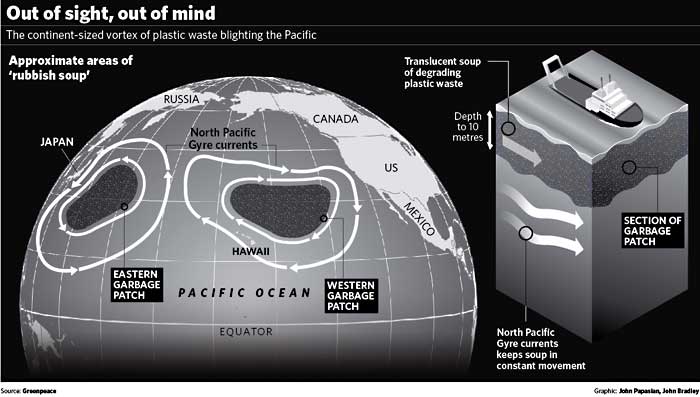
The Garbage Patch formed gradually as a result of marine pollution gathered by oceanic currents. The gyre’s rotational pattern draws in waste material from across the North Pacific Ocean. As material is captured in the currents, wind-driven surface currents gradually move floating debris toward the center, trapping it in the region.

So what are the sources of pollutants:
In a nutshell, we are the source.
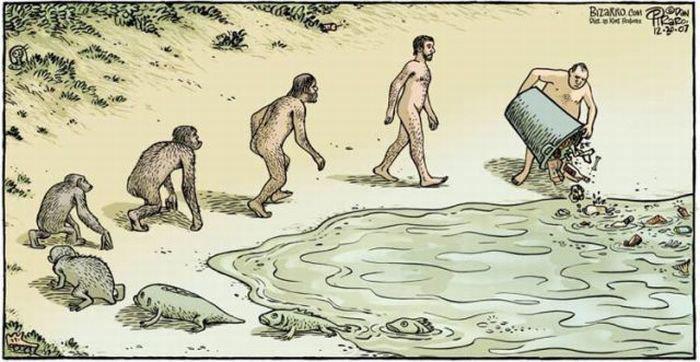
About 20% of the junk is thrown off ships or oil platforms. Ship-generated pollution is a source of concern, since a typical 3,000-passenger cruise ship produces over eight tons of waste weekly, a major amount of which ends up in the patch.
The other 80% of the garbage comes from land-based sources.
Rivers carry garbage out to sea, which then makes its way into the patch. Currents carry debris from the west coast of North America to the gyre in about six years, and debris from the east coast of Asia in a year or less.
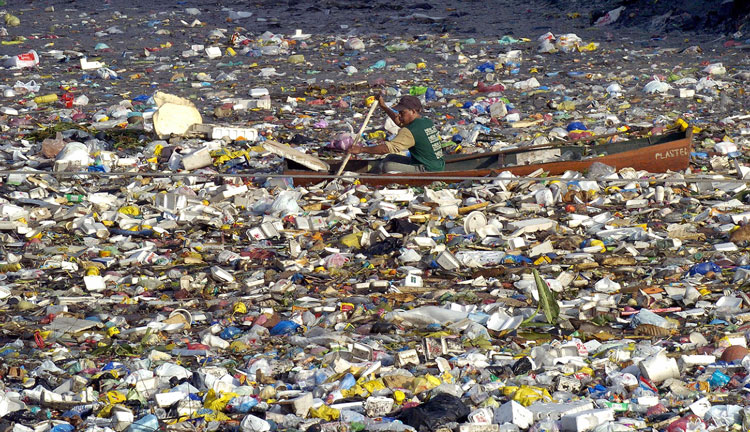
Pollutants range in size from abandoned fishing nets to micro-pellets used in abrasive cleaners and includes everything from footballs to kayaks to Lego blocks and carrier bags. Plastic cans, bottles, toys, bags, cups, balls… you get the picture.
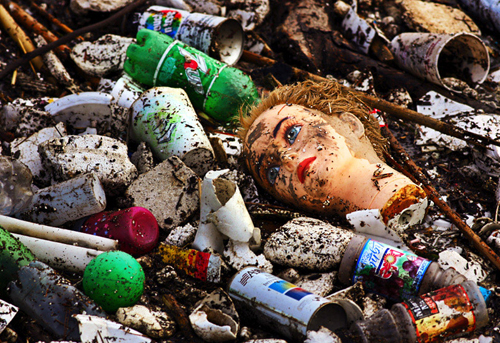
You name it, and it’s in there…

The biggest problem is our addiction to plastic.
According to National Geographic, more than 200 million tones of plastic are produced each year, of which about 10% ends up in the oceans. And once plastic is made, it NEVER breaks down.


All of this plastic in the ocean is having a devastating effect on Marine life.
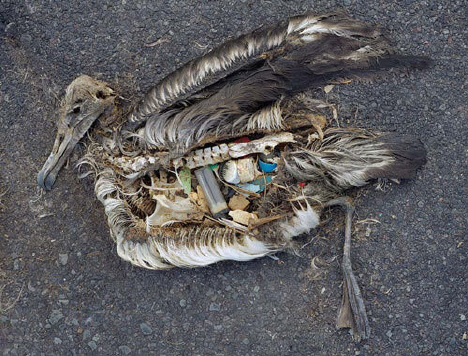
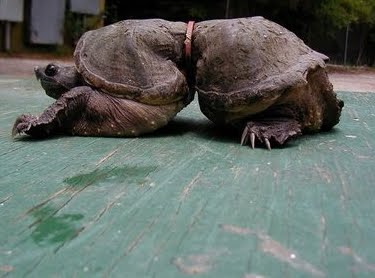
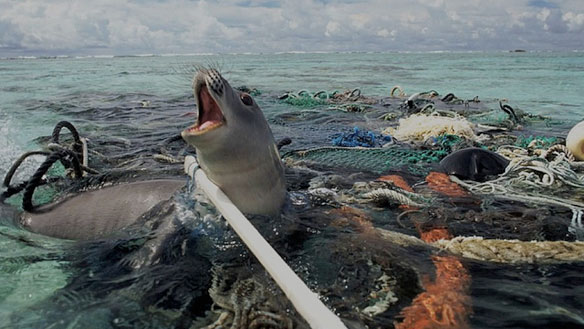
This statistic is grim—for marine animals, of course, but even more so for humans. Why? Because just like the marine life, we’re now ingesting plastic toxins constantly.
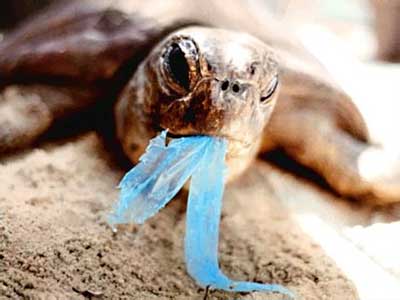
Plastic has made it’s way into the food chain.
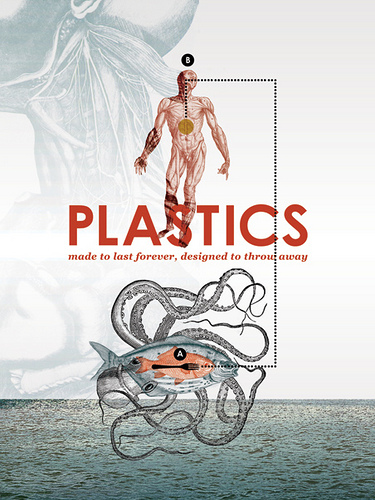
All sea creatures, from the largest to the microscopic organisms, are, at one point or another, swallowing the seawater soup instilled with toxic chemicals from plastic decomposition. The world population is eating fish that have eaten other fish, which have eaten toxin-saturated plastics. In essence, humans are eating their own waste.
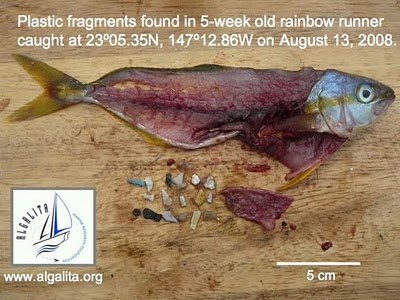

Facts:
267 marine species are affected by plastic garbage already.
All sea creatures are threatened by floating plastic, from whales down to zooplankton.
We are the last in the food chain, and we are definitely experiencing the consequences of our actions.
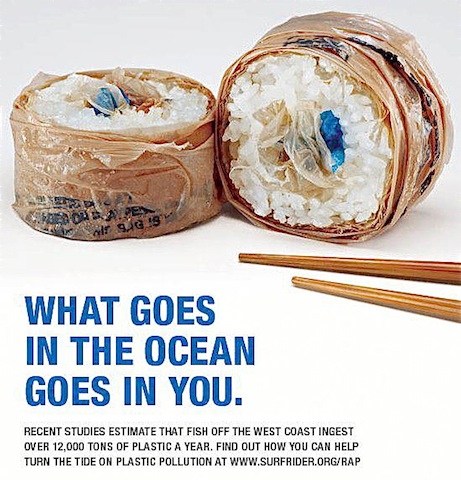
You could take your blood serum to a lab right now, and they’d find at least 100 industrial chemicals (INSIDE OF YOU) that did not exist in 1950.
If that doesn’t deeply disturb you, then you have your head buried in the plastic.
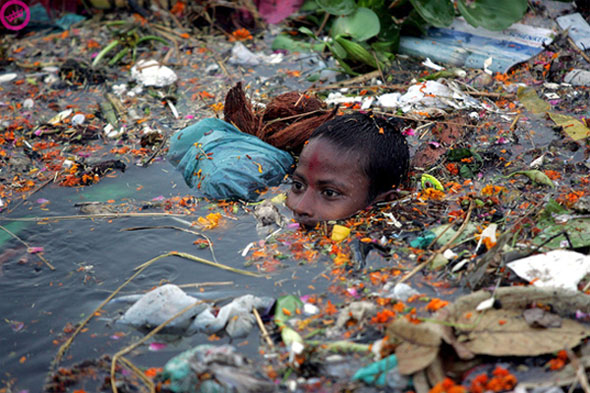
What we can do:
As sad as it is, this is such a monstrous problem that it will be very hard to stop and reverse the damage. Our world is addicted to plastic. But here is what you can do to try and help.
1) Although recycling makes only a small impact, everyone should do it, period. And more importantly, we need to push for and support more robust recycling programs, because right now they are pathetic.
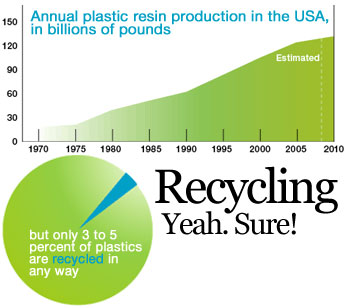
2) Stop using plastic. That’s the only way we can eliminate all the toxic products that harm the animals and us human beings. This is clearly easier said than done. Not using plastic is currently impossible, but each person CAN reduce plastic use.
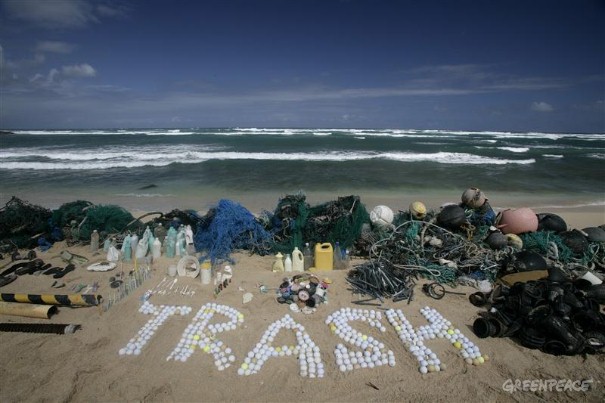
To make the biggest impact, minimize your consumption of bottled water, bottled soda, and plastic bags.
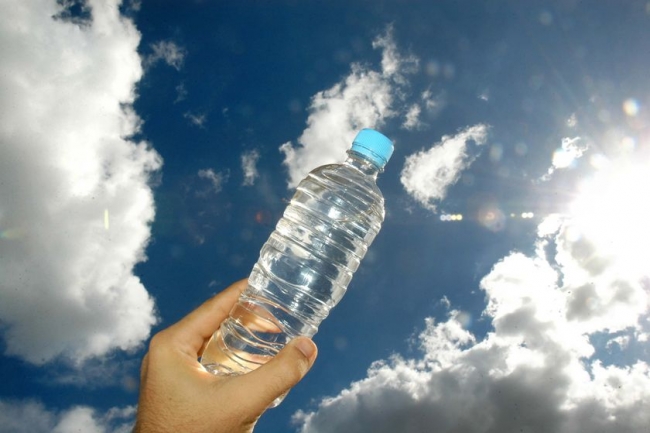
3) The BIGGEST thing we can do to help this problem is make the transition to biodegradable plastics. Biodegradable plastics will decompose in natural aerobic (composting) and anaerobic (landfill) environments.
The biggest challenge here will be getting the plastic companies like Dupont to transition tobiodegradable plastics. That is about as challenging as trying to get the oil companies to pursue clean fuel alternatives.
As with many of the problems of our day, this one seems hopeless. I hate to leave a blog post in a pessimistic light, but to be honest with you, I am losing faith that enough people will evolve the consciousness required to fix these problems fast enough to make a difference.
Let’s hope I’m wrong.
TREE
Some interesting links:
Some good videos:

